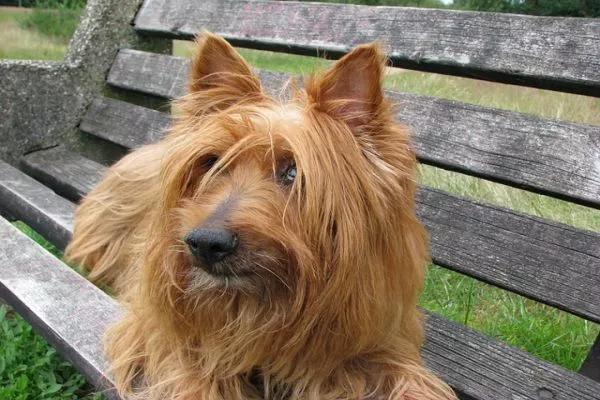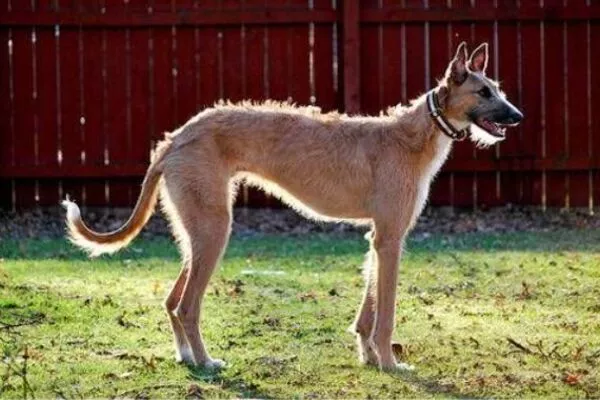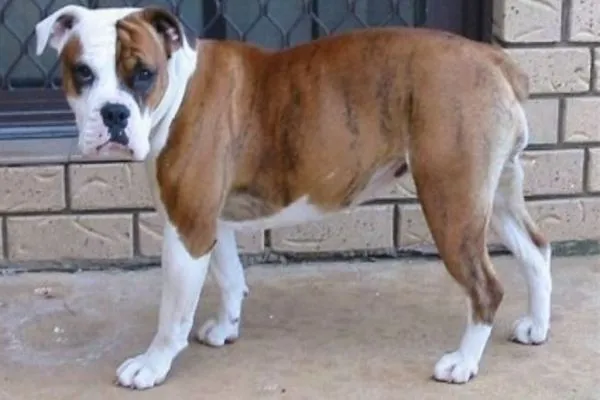Contents
- 1 14 Australian Dog Breeds
- 2 1. Australian Cattle Dog
- 3 2. Australian Terrier
- 4 3. Australian Shepherd
- 5 4. Australian Kelpie
- 6 5. Silky Terrier
- 7 6. Koolie
- 8 7. Australian Stumpy Tail Cattle Dog
- 9 8. Australian Staghound
- 10 9. Bull Arab(Australian pig dog)
- 11 10. Miniature Fox Terrier
- 12 11. Tenterfield Terrier
- 13 12. Australian Bulldog
- 14 13. Australian Cobberdog
- 15 14. Dingo (Non domestic dogs )
- 16 FAQ
- 17 Final Thoughts
If you’re interested in dogs, then you probably know that there are hundreds of different breeds out there. But did you know that Australia has its own unique collection of dog breeds?
These breeds have been developed over the years to be perfectly suited to the harsh Australian climate and terrain, making them some of the hardiest and most versatile dogs on the planet.
The Australian dog breeds include everything from herding dogs like the Australian Cattle Dog and Kelpie, to hunting dogs like the Australian Staghound, to companion dogs like the Silky Terrier.
Each breed has its own distinct characteristics that make it well-suited for a particular task or environment.
In this article, we’ll take a closer look at some of these fascinating breeds and explore what makes them so special.
Also, Read- Popular Russian Dog Breeds
14 Australian Dog Breeds
1. Australian Cattle Dog

Don’t let the Australian Cattle Dog’s high energy level scare you off, because their loyalty and intelligence make them incredibly rewarding companions.
The breed was developed in the 19th century in Australia by crossing Dingo breeds with European herding dogs to create a breed that could withstand the harsh Australian climate while being tough enough to handle large herds of cattle.
This breed is known for its work ethic, high energy levels and strong herding instincts. When it comes to training and socialization, consistency is key with this breed.
They are highly intelligent and need mental stimulation along with physical exercise. Early socialization is important as they can be wary of strangers if not properly introduced.
Physically, these dogs are medium-sized with a muscular build and come in blue or red speckled patterns. Health-wise, they are generally a healthy breed but can be prone to hip dysplasia and deafness.
Proper nutrition and regular exercise should help keep them healthy throughout their life. Some famous Australian Cattle Dogs include Bluey who lived until 29 years old making him the oldest dog ever recorded.
2. Australian Terrier

You’ll love the spunky and fearless personality of the Australian Terrier, with its wiry coat and alert expression.
Originating in Australia during the 1800s, this breed was developed by crossing several British terriers to create a dog that could handle the harsh Australian climate and terrain.
The Australian Terrier is a small-sized breed that typically weighs between 14-16 pounds, standing at around 10 -11 inches tall at the shoulder.
With their lively and curious nature, Australian Terriers make excellent companions for active individuals or families.
They are known for being affectionate towards their owners but can also be independent and stubborn at times.
Training should begin early on in life to establish boundaries and prevent any unwanted behaviors from developing.
Regular exercise is essential to keep them physically fit, as they have high energy levels and require plenty of mental stimulation to prevent boredom.
When it comes to grooming, Australian Terriers have a harsh outer coat that needs regular brushing to prevent matting.
Bathing should only be done when necessary as over-bathing can strip their coat of natural oils needed for protection against weather elements.
3. Australian Shepherd

If you want a loyal and intelligent companion, the Australian Shepherd may be the perfect fit for you.
This breed is known for being highly trainable and excelling in various activities such as agility competitions, herding, and search and rescue.
The Australian Shepherd, also known as the “Aussie”, is a medium-sized herding dog breed that originated in the Western United States in the 19th century.
Despite its name, the Australian Shepherd was not actually developed in Australia, but rather in the United States by ranchers who needed a versatile and hardworking dog to help them with their livestock.
4. Australian Kelpie

Looking for a high-energy and intelligent companion? Have you considered the Australian Kelpie?
This breed was developed in the 19th century by Australian farmers who needed a dog that could withstand the harsh climate and terrain of their land.
The result was an agile, hard-working dog that excels at herding both sheep and cattle.
Training and behavior are crucial aspects to consider when bringing an Australian Kelpie into your home.
These dogs require plenty of physical exercise as well as mental stimulation to prevent boredom or destructive behaviors. They’re highly intelligent and respond well to positive reinforcement training methods.
Physically, they have a lean, muscular build with short fur that comes in various colors including black, chocolate, red, and blue.
Famous Australian Kelpies include Red Dog from Western Australia, who became a symbol of loyalty after traveling thousands of miles alone to find his owner’s grave site.
5. Silky Terrier

Don’t miss out on the opportunity to fall in love with the adorable Silky Terrier, a loyal and affectionate companion that will bring endless joy to your life.
This breed is known for its long, silky coat that requires daily grooming to prevent matting and tangling. The coat can come in various shades of blue and tan, making it a stunning addition to any family.
Despite their small size, Silky Terriers are active dogs that require regular exercise. They have an energetic personality and enjoy playing fetch or going for walks with their owners.
Training should be consistent and firm but always positive, as this breed responds well to praise and rewards. Common health issues include allergies, patellar luxation, and dental problems, so regular vet check-ups are essential for maintaining their overall health.
With proper care and attention, the Silky Terrier will be a loving companion that brings happiness to your home for years to come.
These dogs have been known to attack other animals and humans, so it’s important for pet owners to understand the proper ways to handle them.
Alaskan Malamutes are incredibly intelligent and loyal, but they need firm leadership from their owner in order to prevent bad behaviours.
They require lots of exercise and stimulation, both mentally and physically, as well as plenty of positive reinforcement training. If these needs aren’t met, aggressive behaviour may arise.
Proper socialization with people and other dogs should also begin at an early age if you plan on owning one of these majestic creatures.
6. Koolie

You’ll be blown away by the Koolie’s intelligence and athleticism. They are often described as a ‘canine athlete’ due to their agility and speed.
Originating from Australia, Also know as “Australian Koolie” this breed was developed in the 19th century for herding sheep across vast distances.
Compared to the Australian Cattle Dog, which is another popular herding breed in Australia, the Koolie has a leaner and more athletic build. They have a strong work ethic and are highly trainable.
However, it’s important to note that they require plenty of physical exercise and mental stimulation to prevent destructive behavior or boredom-related issues.
If you’re considering adopting a Koolie, make sure you have enough space for them to run around and play, as well as enough time for consistent training sessions.
7. Australian Stumpy Tail Cattle Dog

When considering adding the Australian Stumpy Tail Cattle Dog to your family, picture a sturdy and energetic pup with a unique bobtail that was originally bred for herding cattle over long distances.
This breed originated in Australia during the 1800s, where it was used by farmers to drive stock over vast territories.
The Australian Stumpy Tail Cattle Dog is an intelligent and alert dog that excels at working independently or as part of a team, making it an excellent choice for those who enjoy outdoor activities such as hiking or running.
In terms of physical characteristics, this breed has a muscular build with a short coat that comes in various colors such as blue or red speckled.
They have distinctive upright ears and almond-shaped eyes that are usually brown in color.
While their tail is naturally stumpy, some may be born without one altogether due to genetics.
As for temperament and behavior, the Australian Stumpy Tail Cattle Dog is known for being loyal and protective towards its family but can be wary of strangers if not socialized properly.
They are also high-energy dogs that require plenty of mental stimulation and exercise on a daily basis.
Training should begin early on to establish boundaries and obedience, as well as reduce any potential behavioral issues down the line.
When given proper care and attention, this breed can live up to 15 years with minimal health concerns aside from hip dysplasia or eye disorders commonly found in many dog breeds today.
8. Australian Staghound

The Australian Staghound is a fast and graceful a hunting dog, making it a top choice for hunters and athletic owners alike.
This breed has its origins in Australia, where it was developed to hunt deer, kangaroos, and other game. The breed is a cross between Greyhounds and Scottish Deerhounds.
Physically, the Australian Staghound is a tall and lean dog with long legs built for speed. They have short hair that comes in various colors such as black, white, brown, or brindle.
Their temperament is friendly but they can be reserved around strangers. They’re highly intelligent dogs that require plenty of exercise to keep them stimulated.
Training should start early to ensure obedience and socialization with other pets in the household.
Health concerns include hip dysplasia and bloat, which can be prevented through proper diet and exercise regimes.
9. Bull Arab(Australian pig dog)

Originating in Australia, this breed was created by crossing various breeds such as the Greyhound, Bull Terrier and Pointer breeds.
These dogs are known for their muscular build and high energy levels, making them ideal for hunting wild boars.
When it comes to training techniques for Bull Arab puppies, it’s important to start early and use positive reinforcement methods.
Due to their strong-willed nature, these dogs require firm but gentle training from an experienced handler.
It’s also essential to socialize them with other animals and humans from a young age to prevent any aggressive behavior later on.
Hunting with Bull Arab dogs requires proper training and equipment to ensure safety for both the dog and hunter.
These dogs are natural hunters with a keen sense of smell, sight, and hearing which makes them perfect for tracking down game in harsh terrains.
Like all breeds, there are some health concerns that can affect Bull Arabs such as hip dysplasia and skin allergies. Regular veterinary check-ups are recommended to keep them healthy.
Overall, if you’re an experienced hunter looking for a sturdy companion or someone who leads an active lifestyle with ample time to devote towards training your dog – then the Bull Arab could potentially be an ideal addition to your family!
10. Miniature Fox Terrier

One thing to note about the Miniature Fox Terrier is their high energy levels, making them a great choice for active owners.
The history and origin of the Miniature Fox Terrier dates back to 19th century Australia where they were used as ratting dogs on farms.
This breed is known for being playful and affectionate towards their family members, but they can also be independent and strong-willed.
In terms of temperament and training, Miniature Fox Terriers are intelligent dogs that respond well to positive reinforcement techniques such as praise and treats.
Health concerns may include patellar luxation (knee dislocation) and Legg-Calve-Perthes disease (a condition affecting the hip joint).
Today, they’re recognized by various kennel clubs around the world and are beloved companions due to their small size, lively personality, and loyalty towards their owners.
11. Tenterfield Terrier

Tenterfield Terrier was developed in the 19th century by crossing miniature fox terriers and other small dog breeds.
The Tenterfield Terrier was primarily bred for ratting and fox hunting but eventually became a popular companion dog due to its affectionate and loyal personality.
When it comes to temperament and personality, the Tenterfield Terrier is an active, intelligent, and curious breed.
They are very social dogs that enjoy being around their owners and other pets. However, they can be wary of strangers if not socialized properly from a young age.
In terms of training and exercise needs, this breed requires daily physical activity to keep them mentally stimulated and physically fit.
They are quick learners but may have a stubborn streak at times, so consistency is key when training them.
Health concerns for this breed include eye problems such as cataracts or progressive retinal atrophy (PRA) and patellar luxation (slipping kneecaps).
Finally, compared to other small dog breeds like Chihuahuas or Pomeranians, the Tenterfield Terrier has a more muscular build with longer legs which allows them to be more agile when running or jumping.
12. Australian Bulldog

Australian Bulldog has a fascinating history and origin, having been developed in the 1990s by Noel and Tina Green from various different types of bulldogs – the British Bulldog, Boxer, English staffordshire and bull terrier.
The physical characteristics of this breed are quite distinct, with a muscular body, broad chest, and strong legs.
They have a short coat that comes in various colors such as fawn, brindle, red or white.
The head is large with wrinkles on the forehead and cheeks giving them an adorable expression.
The temperament of an Australian Bulldog is quite friendly and loyal towards their owners making them great family pets.
They are known for being gentle with children but can be protective when it comes to strangers.
13. Australian Cobberdog

Let’s take a look at the Australian Cobberdog, a lesser-known yet fascinating breed with a unique history and temperament.
Originating from Australia, this breed was created by crossing several different breeds including the Poodle, Labrador Retriever, and American Cocker Spaniel.
The goal was to create a hypoallergenic service dog that could also serve as a loving companion.
The Australian Cobberdog is known for its friendly and affectionate personality. They make excellent family pets as they’re highly social and love spending time with their owners.
However, they do require regular exercise and mental stimulation to prevent boredom which can lead to destructive behavior.
When it comes to grooming, their curly coat requires regular brushing to prevent matting and tangling.
Additionally, they’re prone to certain health concerns such as hip dysplasia and eye problems so routine vet check-ups are important in maintaining their overall health and well-being.
14. Dingo (Non domestic dogs )

The mysterious and elusive Dingo, with its wild and free spirit, captures the imagination of those who encounter it in the Australian wilderness.
As an iconic Australian canine, the Dingo is known for its unique appearance, including a sandy-colored coat and pointed ears.
However, their presence has become a source of controversy due to their interactions with wildlife and concerns over hybridization.
Dingo conservation efforts are underway to protect this species from extinction while also addressing the impacts of their presence on other animals.
These efforts involve research into Dingo behavior and habitat use as well as management strategies aimed at reducing conflicts between Dingoes and other wildlife.
Additionally, the role of Dingoes in Aboriginal culture adds another layer to this complex issue that requires careful consideration and respect for cultural values.
Overall, understanding the ecological role of Dingoes in Australia is crucial for developing effective conservation plans that can balance protection with coexistence.
Also, Read- Bull Mastiff Price in India
FAQ
What is the origin of the Australian Cobberdog breed?
“Get to the bottom of the Australian Cobberdog’s roots! The breed originated from a mix of poodle, labrador and other breeds. With strict breeding standards and temperament evaluations, it has gained popularity but watch out for potential health concerns.” ‘If you’re considering getting an Australian Cobberdog, make sure to do your research and choose a reputable breeder who prioritizes health testing and responsible breeding practices.’
How does the temperament of the Australian Bulldog differ from other bulldog breeds?
When comparing the temperament of the Australian Bulldog to other breeds, consider their training methods, health concerns, exercise needs, and breed standards. They are known for being loyal and protective with a low aggression level.
Can the Dingo be domesticated as a pet?
Coincidentally, you may have heard of dingo domestication. However, legal restrictions and behavior challenges make it difficult to keep them as pets. Proper training techniques can help but alternative pet options may be better suited for most households.
What is the history behind the Bull Arab breed’s use as a pig hunting dog?
To understand the Bull Arab’s history in pig hunting, we need to delve into breed development and Australian hunting culture. These working dogs were bred for their strength and endurance, making them ideal for tracking and catching wild pigs.
Final Thoughts
You now know about Australian dog breeds. These breeds are not only popular in their native country, but also around the world. They are known for their unique qualities and traits that make them excellent pets and working dogs.
But wait, you might be thinking, “What about the Dingo?”Yes, the Dingo is technically a wild dog found in Australia and not a traditional breed like those listed above. However, it is still an important part of Australian canine heritage and deserves recognition. With its distinctive appearance and fierce independence, the Dingo represents the untamed spirit of Australia’s rugged landscape.
So whether you prefer a loyal herding dog or an independent wild one, there is an Australian breed out there for everyone. Take pride in knowing about these wonderful creatures and consider adding one to your family today!
Hope you found it helpful
Thank you for Reading.
